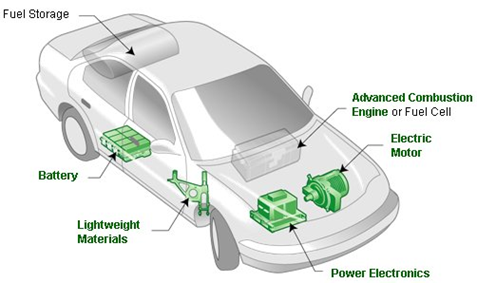Drivers are even using the fuel cars or the electric ones, but for some drivers who want to continue using their fuel cars while borrowing from the electric car its ability to operate without fuel, there’s an alternative that might be right for those drivers. A fusion between both types that enables the vehicle to travel significant distances on an electric charge, but have a backup gas engine or generator to take it further when needed.
With all the good environment stuff being said about the electric cars, they still don’t make sense for everyone. Some drivers might need to travel longer distances on a regular basis or perhaps their area doesn’t yet provide an abundance of charging stations. However, this situation is more likely to change in the future when drivers will witness battery range, recharge times and charging infrastructure improve over the coming years; but until then, an extended-range vehicle might be a better choice for some green-conscious drivers in the meantime. A clear example of this future look is about electric vehicle owners in St. Charles who no longer need to make a trip to Geneva or Naperville to charge their cars now that the city has installed its first charging station in the downtown area. On Monday, city officials and residents celebrated the city’s new dual charging station, located on the fourth floor of the First Street parking garage, with a ribbon-cutting ceremony. Also The Village of Skokie has competitively selected a firm to install an Electric Vehicle (EV) charging station in the community.
Many conventional hybrids boast their ability to run in “EV mode” at low speeds, for very short distances. Extended-range vehicles, however, can go much further and faster under all-electric operation than a traditional hybrid. The plug-in electric Chevy Volt, for instance, can go about 38 miles on a battery charge, whereas the plug-in hybrid Ford Fusion Energy can travel about 20 miles without engaging the gas engine.
Pure electric vehicles like the Nissan Leaf can travel even further on battery power alone, two years ago, the Nissan Leaf and the Chevrolet Volt debuted to lots of skepticism. Would American drivers embrace these plug-ins? But an extended-range vehicle doesn’t require you to charge up in order to keep moving. Say you forget to plug in overnight or you need to travel well beyond your car’s electric range: If there’s gas in the tank of an extended-range vehicle, you can keep driving.
While extended-range vehicles offer the flexibility of both gas and electric operation, we’re betting if you own one of this plug-ins, you’re going to charge up as often as you can. You’ll save some money at the pump and maybe a few trees along the way, but expect to pay an extra over the original price of a standard gas or hybrid car for the privilege



